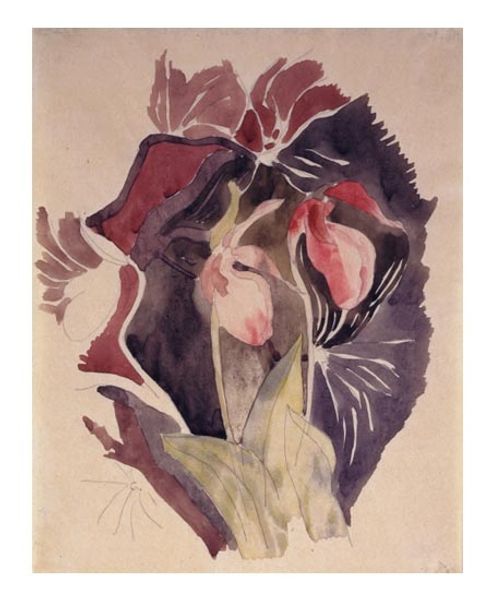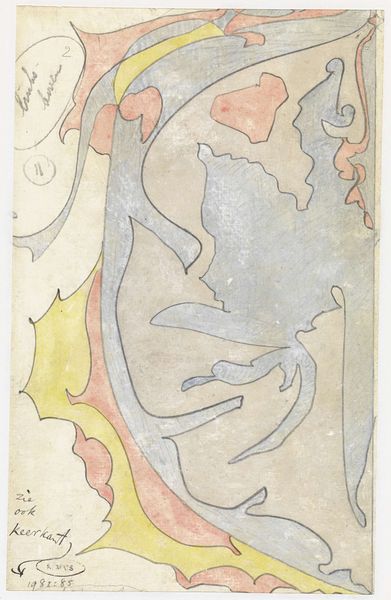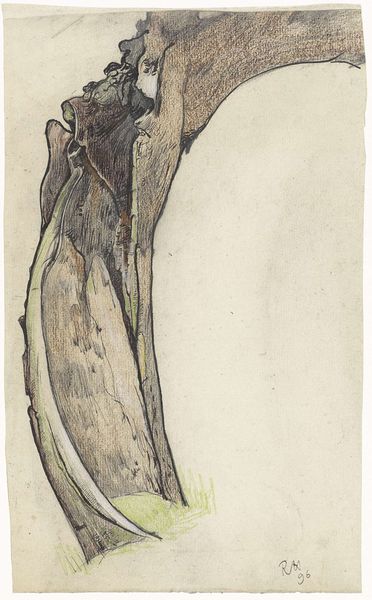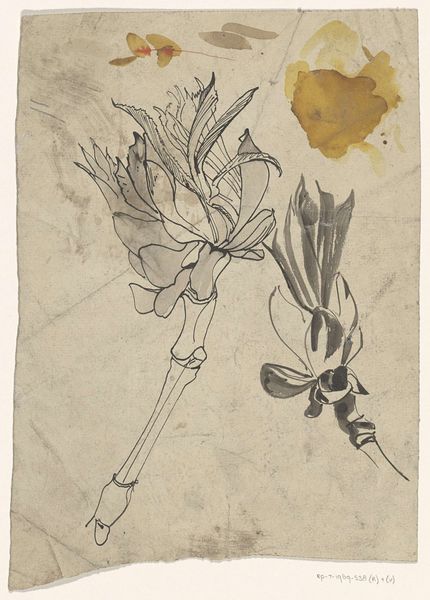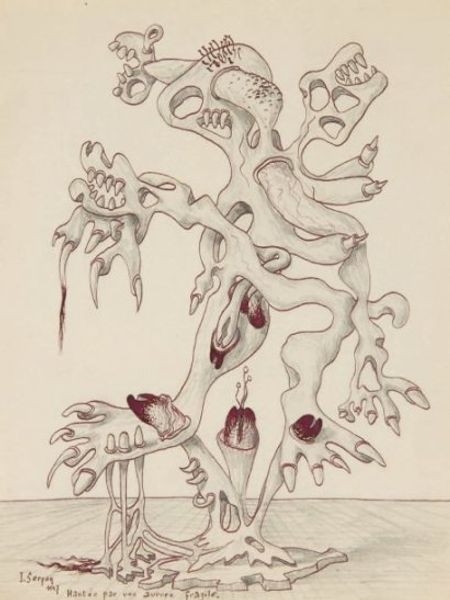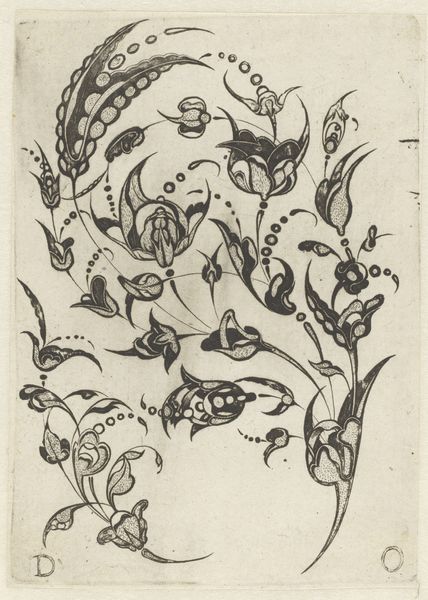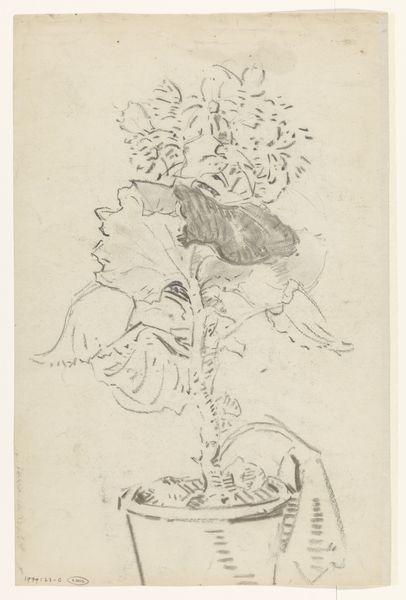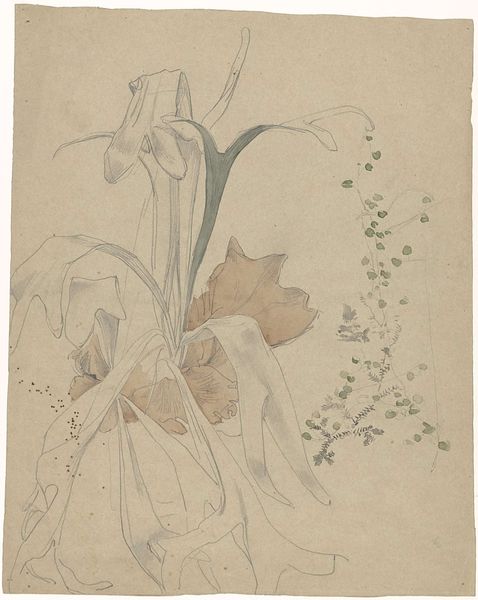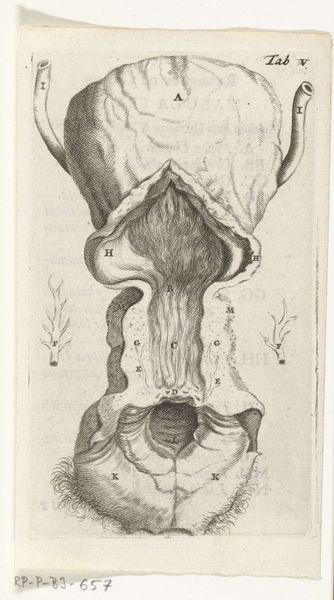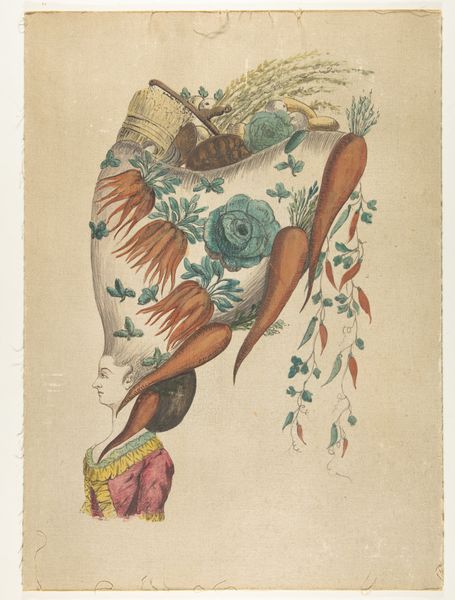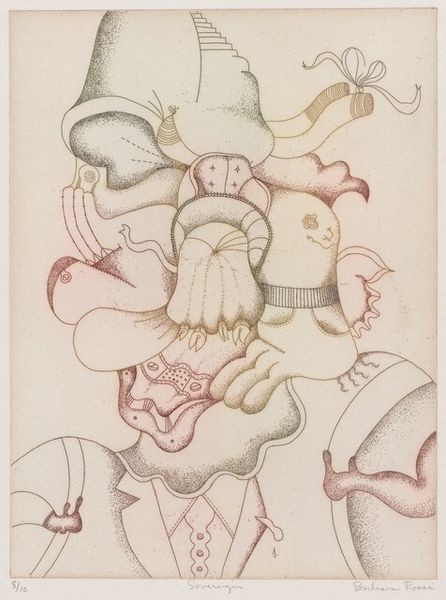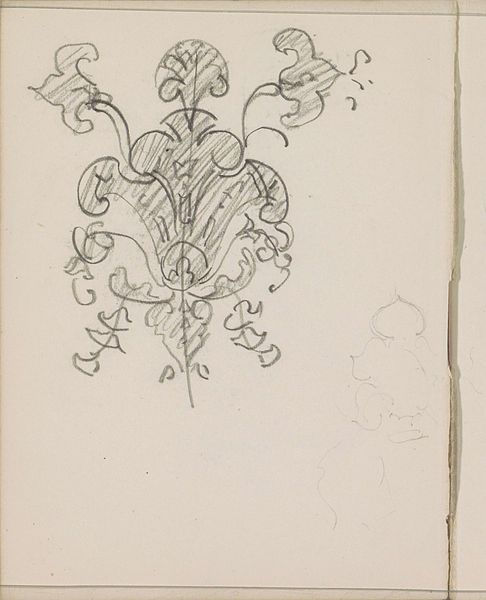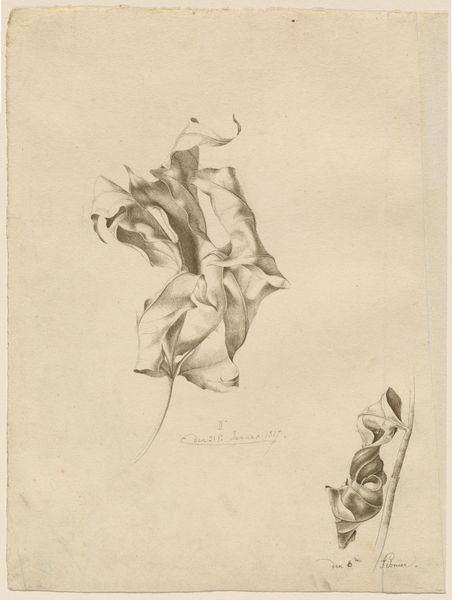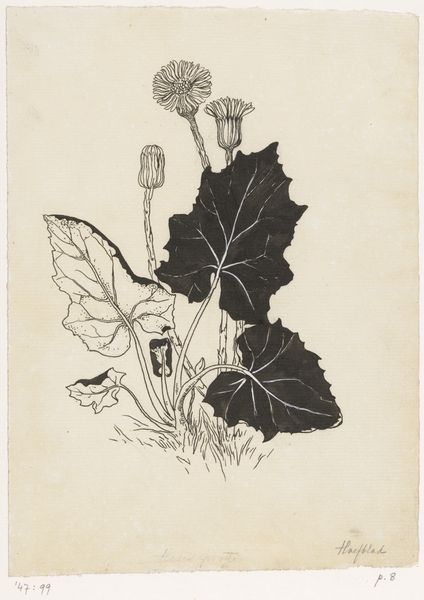
drawing, paper, watercolor
#
drawing
#
art-nouveau
#
pencil sketch
#
paper
#
watercolor
#
watercolour illustration
Dimensions: height 216 mm, width 130 mm
Copyright: Rijks Museum: Open Domain
Editor: So this is "Tulpen," possibly from 1917, by Theo Colenbrander. It's a watercolor and pencil drawing on paper. The colours are so muted; what do you make of this? Curator: Note how Colenbrander identifies "6 kleuren." His annotation isn't just about depicting the flowers; it’s about dissecting the process of *making* the image. This was a working diagram, a stage of production. Think about the availability, cost, and creation of those specific pigments in 1917, during wartime shortages. Editor: Right, so it’s not just a pretty floral drawing. How does that material context change things? Curator: It elevates what might be dismissed as simple "art-nouveau," transforming it into a study of material constraints and ingenuity. Consider also the paper: its quality, source, and purpose for reuse are all clues to the artist's resourceful process in a period defined by its scarcity. How does that influence your understanding of 'finish'? Editor: I guess I see it differently now. Before, it seemed like a gentle nature study, but understanding the "how" and "why" of its production makes me see the artist as an active agent responding to his environment. Curator: Exactly! Colenbrander transforms everyday constraints into a compelling visual investigation, turning "Tulpen" into commentary on material culture. Editor: That is a fascinating insight. I’ll never look at a seemingly simple watercolour the same way again. Curator: It highlights the importance of process, revealing that every artwork has a story beyond its surface, deeply entrenched in the material conditions of its creation.
Comments
No comments
Be the first to comment and join the conversation on the ultimate creative platform.
